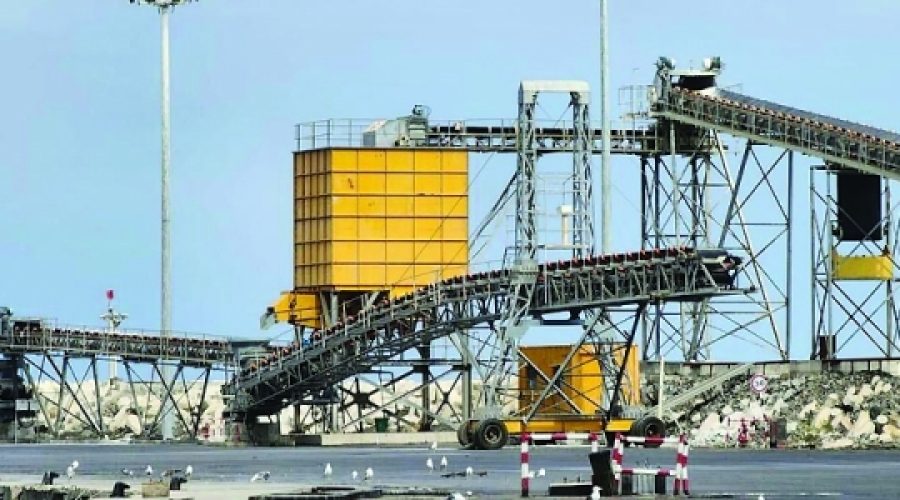ارتفاع الصادرات غير النفطية بمقدار 91 طنًا و3 أطنان في النصف الأول من عام 2025: ما يعنيه هذا النمو للمستثمرين والشركات في عُمان
مسقط 27 أغسطس 2025 - أظهر أداء التجارة الخارجية لسلطنة عمان في النصف الأول من عام 2025 نمواً مطرداً في القطاعات غير النفطية إلى جانب الطلب القوي على الاستثمار، وفقاً لبيانات المركز الوطني للإحصاء والمعلومات.
بلغ إجمالي صادرات السلع 11.5 مليار ريال عُماني بنهاية يونيو. وارتفعت الصادرات غير النفطية بمقدار 9.01 مليار ريال عُماني لتصل إلى 3.26 مليار ريال عُماني، مدفوعةً بشكل رئيسي بصادرات المنتجات المعدنية والكيماويات، بالإضافة إلى زيادة ملحوظة بلغت 150.31 مليار ريال عُماني في صادرات الحيوانات الحية والمنتجات الحيوانية. في المقابل، بلغ إجمالي صادرات النفط والغاز 7.42 مليار ريال عُماني، مما يعكس ضعف أسواق النفط الخام والغاز الطبيعي المسال مقارنةً بالنصف الأول من عام 2024.
وبلغت قيمة إعادة التصدير 815 مليون ريال عماني، بدعم من زيادة مبيعات الآلات والمعدات الكهربائية، على الرغم من تعويضها جزئياً بانخفاض مبيعات معدات النقل والمعادن الثمينة.
ارتفعت واردات السلع بمقدار 5.11 مليار ريال عُماني (3.3 أطنان) لتصل إلى 8.41 مليار ريال عُماني، مدفوعةً بمعدات النقل التي ارتفعت بمقدار 25.71 مليار ريال عُماني (3.3 أطنان)، والآلات والمعدات الكهربائية التي ارتفعت بمقدار 8.31 مليار ريال عُماني (3.3 أطنان). وشهدت واردات المنتجات المعدنية انخفاضًا طفيفًا على أساس سنوي. ويشير هيكل الواردات إلى استمرار النشاط في مشاريع البنية التحتية والخدمات اللوجستية والصناعة.
يؤكد المسؤولون أن نمو الصادرات غير النفطية يتماشى مع أولويات رؤية عُمان 2040 لتنويع قاعدة الصادرات وتوسيعها. في الوقت نفسه، يعكس ارتفاع واردات الآلات ومعدات النقل الاستثمارات المستمرة في القطاعين العام والخاص.
على وجه التحديد، شهدت فئات الصادرات غير النفطية الرئيسية مكاسب: المعادن ارتفعت بمقدار 4.01 طن متري، والمواد الكيميائية ارتفعت بمقدار 4.41 طن متري، والحيوانات الحية ومنتجاتها، بزيادة حادة بلغت 150.31 طن متري. انخفضت صادرات قطاع الطاقة في جميع الفئات، حيث انخفض النفط الخام بمقدار 16.21 طن متري، والمنتجات المكررة بمقدار 15.31 طن متري، والغاز الطبيعي المسال بمقدار 17.21 طن متري. أما على صعيد الواردات، فقد بلغت واردات معدات النقل 861 مليون ريال عُماني، والآلات والمعدات الكهربائية 1.43 مليار ريال عُماني، والمنتجات المعدنية 2.24 مليار ريال عُماني.
مع تزايد زخم جهود التنويع الاقتصادي وتوسع القدرات اللوجستية، يتحول هيكل التجارة العُماني تدريجيًا نحو المنتجات غير النفطية ذات القيمة المضافة الأعلى. ومن المتوقع أن يُسهم تركيز الحكومة المستمر على تسهيل الاستثمار، والتنمية الصناعية، وتشجيع الصادرات في الحفاظ على أداء تجاري إيجابي خلال الفترة المتبقية من عام ٢٠٢٥. ومع ذلك، ستظل عائدات صادرات الهيدروكربونات متأثرة بظروف سوق الطاقة العالمية.
تحليل خاص من عمانت | تصفح سوق عُمان
يشهد قطاع الصادرات غير النفطية في سلطنة عمان نمواً ملحوظاً، بقيادة المعادن والمواد الكيميائية، بالإضافة إلى زيادة ملحوظة في منتجات الحيوانات الحية، يشير إلى تحول استراتيجي نحو التنويع الاقتصادي بما يتماشى مع رؤية عُمان 2040. بالنسبة للشركات والمستثمرين، يقدم هذا المشهد التجاري المتطور فرصًا في الصناعات غير النفطية عالية القيمة وتطوير البنية التحتيةمع ضرورة توخي الحذر في ظل انخفاض عائدات النفط والغاز. ينبغي على أصحاب المصلحة الأذكياء إعطاء الأولوية للاستثمار في المشاريع الصناعية واللوجستية للاستفادة من هذه المرحلة التحوّلية من النمو.



